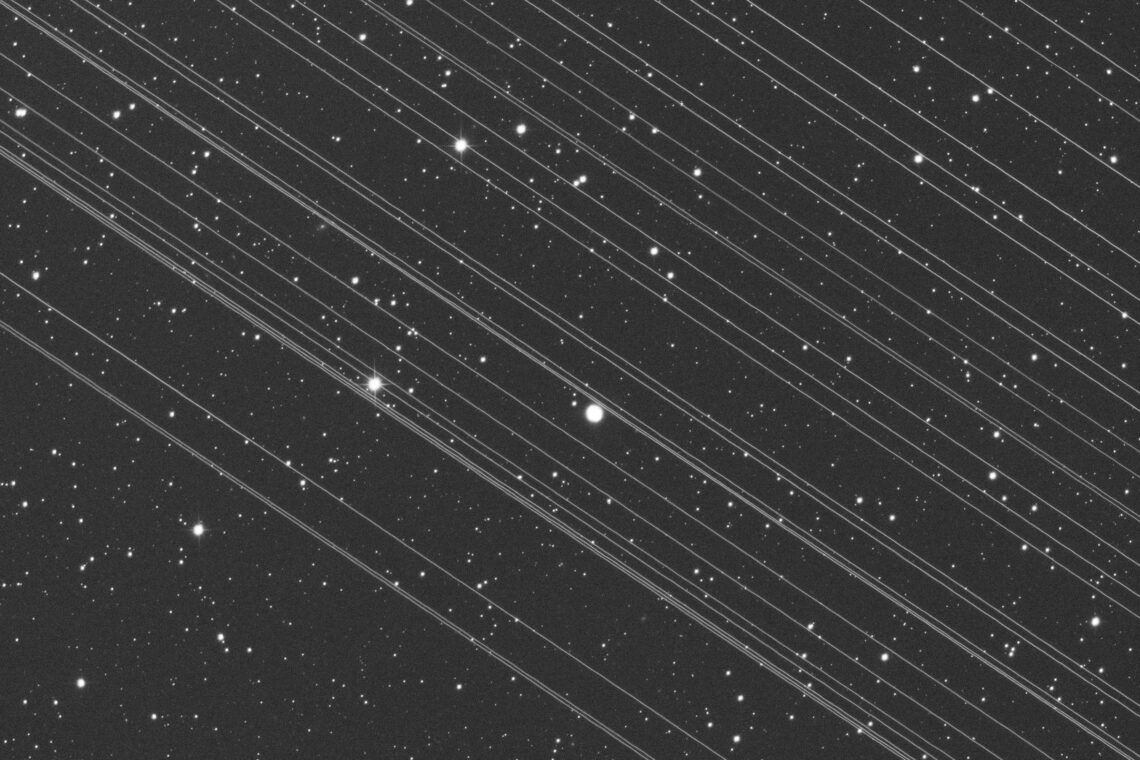Usually satellites like to photo-bomb our astronomical images. Often it is one of the Starlink satellites that populate low earth orbit – approximately 2000 Starlink satellites have been launched by now and about 1700 are active. These numbers are changing quickly… with every new launch of a Starlink batch.
We decided to watch out for one of the newly launched Starlink batches with our telescopes at the TURMX observatory, particularly the Starlink Group 4-3 launched on December 2, 2021, consisting of 48 Starlink satellites. On the same launch there were two Blacksky satellites, these are small earth surveillance sats.
Would we be able to catch them all with our telescopes? We targeted a passover on the evening of Decomber 5, 2021 – just 2.8 days after launch.
Below is a time lapse video playing in real time. It is recorded with our smallest telescope, a specialized telephoto lens with 200mm focal length equipped with a cooled APS-C size monochrome chip. The field of view in these images is about 6 degrees wide. We pointed the telescope to a region of sky in the constellation Andromeda and started to take a sequence of short 1/8 sec exposures. And we waited for the Starlink batch to arrive at the scene…
Did you manage to count them all? You can even see the two Blacksky sats, which are significantly dimmer than the Starlink satellites.
At the same time our large PlaneWave CDK17 to long exposures of the Blue Snowball Nebula, NGC7662, which happens to be close to the center of the above field as well. This is what a single 60 sec exposure looks like…

Actually, we had observed the same group of satellites already two days earlier, on the evening of December 3, 2021… a little over 20 hours after launch, when then whole group was still very compact. Here is another time lapse movie playing in real-time, using CDK17 again… be prepared, they will zip through the field very quickly!

